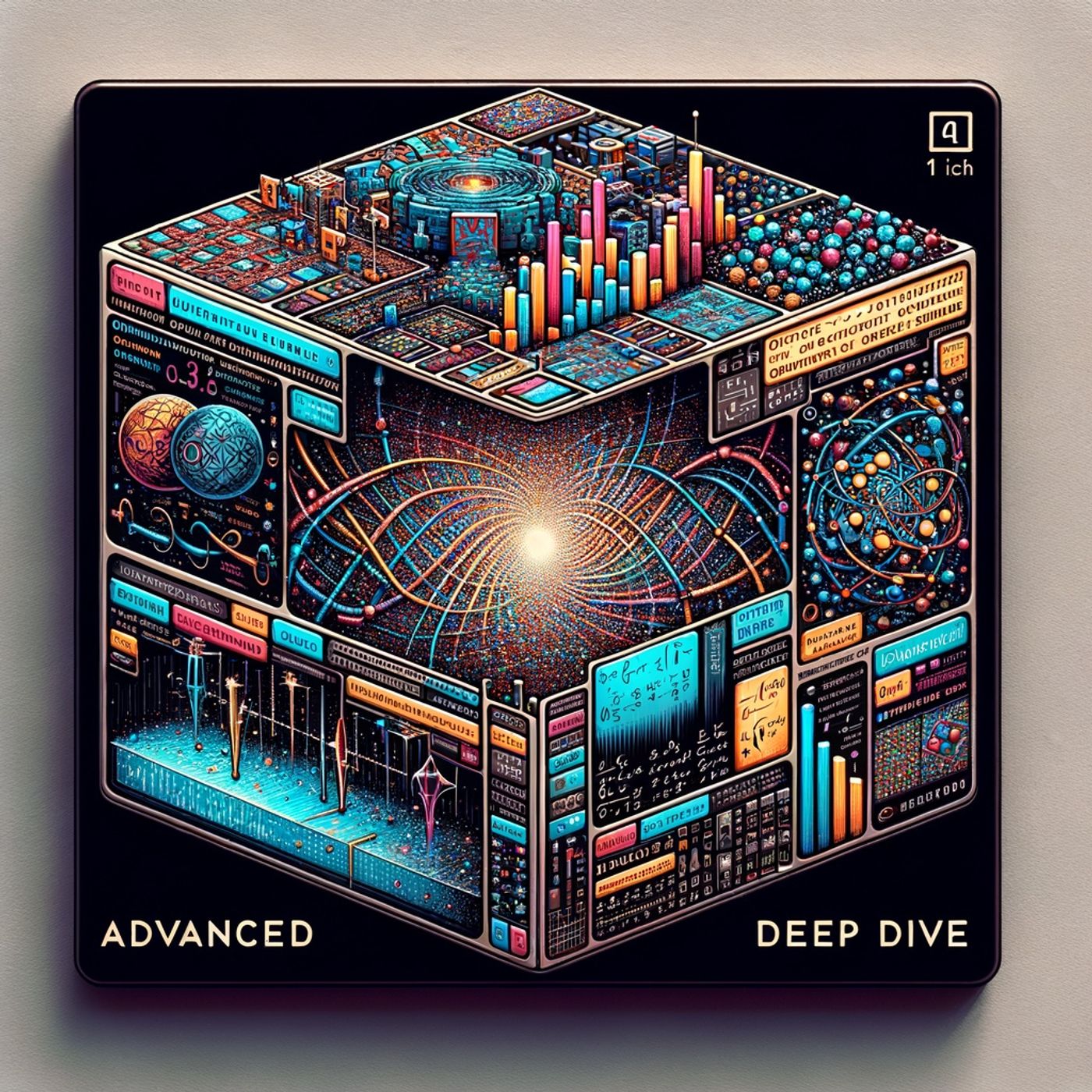Advanced Quantum Deep Dives

Advanced Quantum Deep Dives
Podcast Description
This is your Advanced Quantum Deep Dives podcast.Explore the forefront of quantum technology with "Advanced Quantum Deep Dives." Updated daily, this podcast delves into the latest research and technical developments in quantum error correction, coherence improvements, and scaling solutions. Learn about specific mathematical approaches and gain insights from groundbreaking experimental results. Stay ahead in the rapidly evolving world of quantum research with in-depth analysis and expert interviews. Perfect for researchers, academics, and anyone passionate about quantum advancements.For more info go to https://www.quietplease.aiCheck out these deals https://amzn.to/48MZPjs
Podcast Insights
Content Themes
The podcast covers a diverse array of topics within quantum technology, specifically focusing on quantum error correction methods, advancements in coherence improvements, applications of quantum simulations, and the potential for quantum computing in real-world applications. Recent episodes featured discussions on quantum simulators uncovering new insights into magnetic phase transitions and leveraging qubits as sensitive gravity sensors.

This is your Advanced Quantum Deep Dives podcast.
Explore the forefront of quantum technology with “Advanced Quantum Deep Dives.” Updated daily, this podcast delves into the latest research and technical developments in quantum error correction, coherence improvements, and scaling solutions. Learn about specific mathematical approaches and gain insights from groundbreaking experimental results. Stay ahead in the rapidly evolving world of quantum research with in-depth analysis and expert interviews. Perfect for researchers, academics, and anyone passionate about quantum advancements.
For more info go to
Check out these deals https://amzn.to/48MZPjs
This is your Advanced Quantum Deep Dives podcast.
They thought it would make things worse. That’s what I love.
I’m Leo – Learning Enhanced Operator – and today I’m obsessed with a tiny material tweak that just rewired how I think about quantum hardware.
According to a new paper in Advanced Electronic Materials, covered this week by The Quantum Insider, a team from Sandia National Laboratories, the University of Arkansas, and Dartmouth doped the barriers of a germanium quantum well with trace amounts of tin and silicon. Intuition said: more disorder, more scattering, slower electrons. Instead, electrical mobility shot up. They created a smoother quantum highway by adding what looked like potholes.
In quantum-computing terms, that quantum well is the quiet corridor where charge carriers glide, forming the basis for spin and charge qubits. Crank up mobility and suddenly qubits can talk to each other faster and with less noise. Picture a superconducting data center shrunk to a few nanometers: chilled metal, the faint hiss of helium, control lines weaving like silver vines around a core of hyper-ordered atoms. That’s where this tweak lives.
Here’s the surprising part: the improvement seems to come from atomic short‑range order. Tiny, local patterns in how atoms arrange themselves appear to guide electrons instead of blocking them. We usually teach students that disorder kills coherence; this result hints that cleverly sculpted “disorder” might actually protect and accelerate quantum information.
And it lands in a week when the rest of the quantum world is sprinting. IBM and the University of Tokyo just highlighted Krylov quantum diagonalization and its sample‑based cousin as leading candidates for practical quantum advantage, pushing our algorithms toward real condensed‑matter simulations on today’s noisy devices. Q‑CTRL is celebrating the International Year of Quantum by claiming true commercial quantum advantage in GPS‑denied navigation, while at Israel’s Quantum Computing Center in Tel Aviv, John Martinis and Qolab have installed a new generation of superconducting qubits aimed at industrial‑scale reliability.
Taken together, you can feel the field phase‑shifting. As geopolitics wrestle with supply chains and navigation systems, we’re discovering that a whispered change in atomic arrangement can ripple up to defense policy and global infrastructure. A few atoms of tin and silicon in a germanium layer may someday decide whose autonomous ship finds home in a GPS blackout.
For now, it’s one exquisitely engineered quantum well. But in quantum, phase transitions start quietly.
Thanks for listening. If you ever have questions, or topics you want discussed on air, just send an email to [email protected]. Don’t forget to subscribe to Advanced Quantum Deep Dives. This has been a Quiet Please Production, and for more information you can check out quiet please dot AI.
For more http://www.quietplease.ai
Get the best deals https://amzn.to/3ODvOta
This content was created in partnership and with the help of Artificial Intelligence AI

Disclaimer
This podcast’s information is provided for general reference and was obtained from publicly accessible sources. The Podcast Collaborative neither produces nor verifies the content, accuracy, or suitability of this podcast. Views and opinions belong solely to the podcast creators and guests.
For a complete disclaimer, please see our Full Disclaimer on the archive page. The Podcast Collaborative bears no responsibility for the podcast’s themes, language, or overall content. Listener discretion is advised. Read our Terms of Use and Privacy Policy for more details.